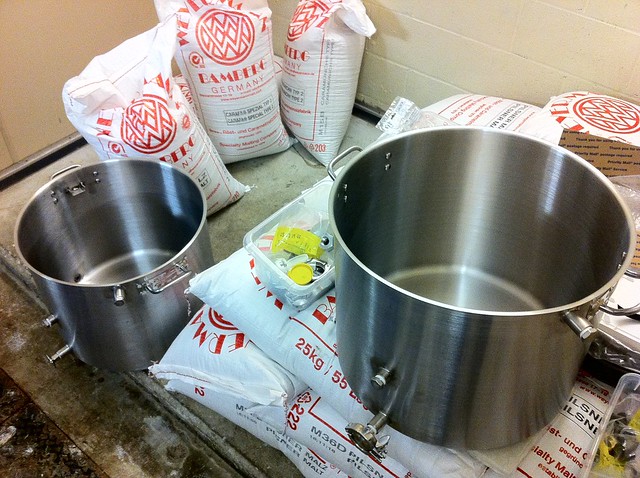This picture pretty much shows it all:

photo by brewerJP
It's really noticeable which pot has been passivated and which has not (can you tell? Hint: nickel comes to the front). I've never seen it with my own eyes before so it definitely was an eye opener when I did. Just thought I'd share this as a punch list item for those that weld on their pots or other stainless equipment before putting it to use. I couldn't even imagine having done so without it.
Just to preempt how I did this: I ran a closed loop. Filled the kettle with cold water and an appropriate amount of Leracid KMS and pumped it through my diaphraghm pump into my CIP lid that has a 360 spray nozzle (the one from McMaster). Let this run for 30-40 minutes then racked the solution over to the next kettle and did the same thing. After each run rinse very well and after all is said and done flush the pump, tubing and fittings with a lot of fresh water.
Hope this is useful to someone!

photo by brewerJP
It's really noticeable which pot has been passivated and which has not (can you tell? Hint: nickel comes to the front). I've never seen it with my own eyes before so it definitely was an eye opener when I did. Just thought I'd share this as a punch list item for those that weld on their pots or other stainless equipment before putting it to use. I couldn't even imagine having done so without it.
Just to preempt how I did this: I ran a closed loop. Filled the kettle with cold water and an appropriate amount of Leracid KMS and pumped it through my diaphraghm pump into my CIP lid that has a 360 spray nozzle (the one from McMaster). Let this run for 30-40 minutes then racked the solution over to the next kettle and did the same thing. After each run rinse very well and after all is said and done flush the pump, tubing and fittings with a lot of fresh water.
Hope this is useful to someone!


